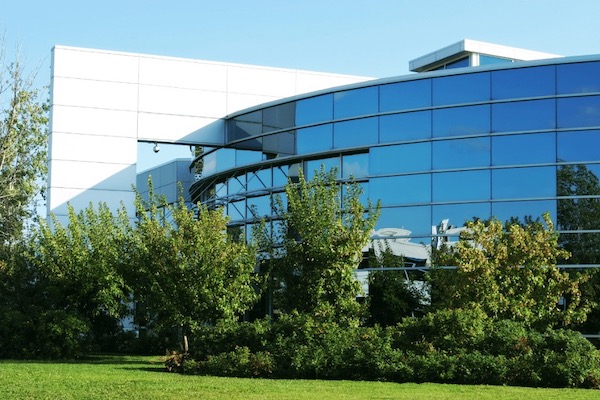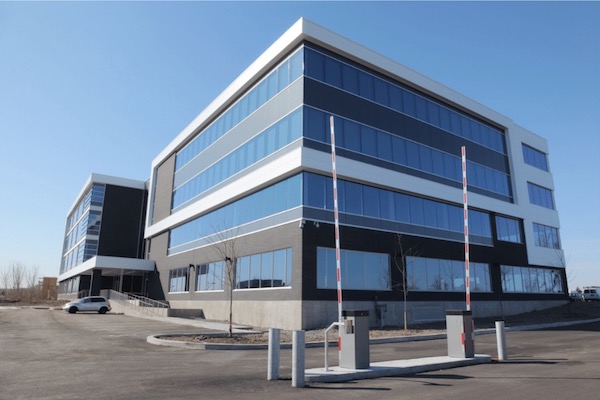
In 2022, companies are more motivated than ever to reach their sustainability goals. We explore whether BAS controls can get the job done
Due to increased knowledge about CO2 emissions, energy conservation, global warming, and other subjects related to energy usage and natural resources, companies have set lofty sustainability goals for the near future. To achieve these goals however, companies will have to make major changes to the way that they operate. Building management presents a huge opportunity for companies to optimize their outdated operating systems and get new insights on how they can save money and energy in the future.
As it currently stands, commercial buildings account for just under half of global total electricity usage and global CO2 emissions. That means that commercial buildings account for a large portion of energy consumption and harmful emissions that are currently affecting our environment.
In this article, we are going to be discussing a few of the ways that using building automation systems to operate commercial buildings will help companies reach their long-term sustainability goals. By examining how these automation systems work, we can directly pinpoint areas for improvement that will lead to more widespread adoption of BAS technology. Let’s dive in!
What Are BAS Systems?
BAS controls help streamline building management for operators and all inhabitants.

A building automation system — often referred to as a building management system — is an interconnected network of devices that manage and report on building operations. In most buildings, a BAS will be able to automate all of the major operating systems in the building including — but not limited to — HVAC, plumbing, lighting, electricity, and security. Since these complex systems are being constantly monitored and automatically controlled, there is far less need for human interference. These BAS systems are also able to report on any system irregularities and offer suggestions for improvement inefficiency. In most cases, the BAS system will automatically implement these energy-saving measures to save money and reduce consumption.
Since these BAS controls are such powerful tools to help buildings improve their management and save energy, many believe that these systems are the key to helping businesses reach their lofty sustainability goals.
How Will BAS Controls Help Businesses Meet Their Energy Conservation Goals?
Through automation and other integrated devices, BAS controls are capable of decreasing energy usage by up to 50%.

As things currently stand, large commercial buildings are accounting for a large portion of worldwide energy consumption. To help conserve energy and save money, companies are taking notice of their energy consumption and are setting binding goals for the near future — promising to decrease their total energy consumption or carbon footprint by up to 50%. BAS systems provide a solution that can help companies do just that. Let’s take a look at some of the ways that BAS technology can cut excessive energy usage:
- Ensuring all building systems are only running when necessary
- Operating systems at minimum capacity when possible
- Minimizing electricity usage throughout the building
- Reporting on areas for energy-usage improvement
- Allowing for devices like sensors that help automate critical systems like lighting and plumbing
- Monitoring system performance to prevent breakdowns
Using all of these beneficial features, businesses will be able to meet their sustainability goals. Real-life implementations have proven that BAS systems can cut a building’s HVAC and lighting energy consumption by half, leading to a total reduction in costs by 25-35%.
But, if these solutions are so powerful, why are they not being adopted in every building across the world? Right now, less than half of buildings in the U.S. over 100,000 square feet are currently implementing these BAS controls. For buildings smaller than 100,000 square feet, the rate is far lower for BAS adoption. Let’s take a closer look at why these powerful systems are not yet being universally adopted.
Why Are Companies Hesitant to Implement BAS Systems?
For a lot of companies, BAS controls are simply too expensive to justify an immediate installation.

Even though these BAS controls are powerful enough to help companies reach their sustainability goals, many companies are searching for other solutions. There are a few reasons why adoption has been so low for automation systems, but the most glaring reason is the current cost of installation and implementation. Right now, the cost to install these advanced systems is too high for a lot of large companies and far too high for medium or small-size companies with less than 100,000 square feet to manage.
The total cost for a business to install a BAS is currently prohibitively high — ranging anywhere from $2 per square foot to $7 per square foot. For smaller companies, this is just not in the budget, even with the promise of energy savings in the future. The cost also depends on the building type and usage, which will affect the total cost of installation. For example, an office building is a far more straightforward installation process than a sports stadium or any other property with a unique purpose.
That leads us to our second point as to why widespread adoption of BAS has been relatively limited — complicated installation and implementation. Since each large building serves a different purpose, each BAS system needs to be custom designed to meet building specifications. This requires the supplier to create a custom layout of sensors, controllers, and other components that allow for building automation. All of the different components need to be manually installed, which can sometimes be a lengthy process depending on the size of the building and the specific automation requirements.
Some problems come with a lack of universal naming standards for the different components, which can make using a BAS difficult during the implementation stage. In some cases, businesses need to stay in close communication with the service that installed their system to properly learn how to interpret the metadata coming from the different systems.
While these may sound like insurmountable challenges for BAS systems, they are becoming more advanced and developers are searching for cost-saving solutions for the installation process. In the next section, we’re going to be exploring how developers are working toward universal adoption.
How Can BAS Systems Become Universally Affordable for Businesses of All Sizes?
BAS controls help save money in the long run, but they need to be more affordable to ensure widespread adoption.

To ensure widespread adoption of these systems — and to help companies reach their sustainability goals, there are a few ways that BAS developers need to innovate. The first and most pressing issue that needs to be addressed is the cost. To court smaller companies with buildings that are under 100,000 square feet, the cost for installation needs to drastically decrease. As these systems advance, it is expected that prices will drop. But, will the prices drop quickly enough to assist these companies as they work to achieve their sustainability goals?
A lot of companies have vowed to halve their energy consumption and carbon emissions by anywhere from 20% to 50% in the next 15 to 30 years. Currently, only time will tell if developers can decrease costs quickly enough to help companies meet their goals.
The second way that BAS can become more widely adopted is by standardizing the terminology and naming conventions. By standardizing the naming conventions, the installation process becomes more universal and is no longer specific to the company and technician performing the installation. Because of this, the building metadata will be more easily readable to the system and will require far less help from the technician as the system is brought online.
There have been efforts to introduce standard protocols for BAS systems, yet none of them have yet been widely adopted as an industry standard. The reason why universal naming conventions are not yet standard is that they are unable to represent all of the metadata that is required to run building operations and because these standards are not yet required by law. Only once developers have a set of naming conventions that are standardized and required for every BAS can these systems become more appealing for companies to introduce.
Finally, to make BAS system installation worthwhile for smaller companies, innovations need to be made for automated point mapping. This process currently requires a BAS expert to manually map each point to bring the system online. Thankfully, strides are currently being made to make BAS implementation far easier for companies and building managers. Right now, developers are working on software upgrades that will be able to automatically identify point types, identify where the points are spatially within a building, and identify the relationship between the points and their systems. When this technology becomes widely available, BAS systems will become far more appealing to businesses that want to avoid lengthy implementation processes.
As it stands, there is no singular solution on the horizon that will encourage companies of all sizes to use BAS technology to meet their sustainability goals. There is, however, research and development progressing in hopes that simplified implementation and lower installation costs make these powerful systems the obvious choice for companies looking to reduce their environmental impact. At the current speed of progress, the major issues we discussed regarding BAS systems will be addressed in the very near future. This is especially true as more companies than ever are becoming conscious of their environmental impact.
via https://www.AiUpNow.com
May 26, 2022 at 10:50PM by admin, Khareem Sudlow
